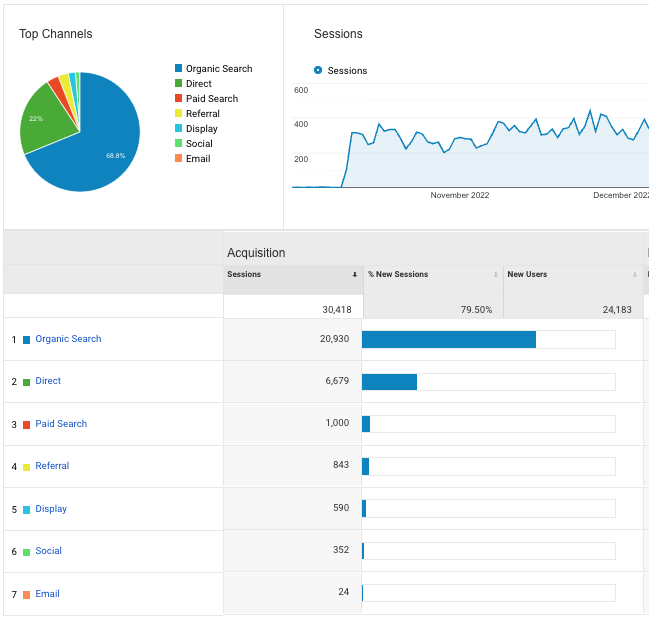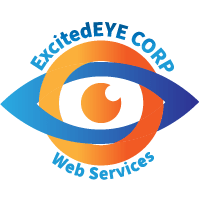Finding a solution to increase web traffic is a challenge! Especially if you’re just starting out or if you’re in a competitive industry. However, it’s not necessarily difficult if you’re willing to put in the effort and follow best practices to drive your website traffic.
Strategies for increasing web traffic
Optimizing your website for search engines. This includes using relevant keywords, creating high-quality content, and ensuring that your website is easy to navigate and mobile-friendly.
Using social media and other online platforms. Sharing your content on social media and other online platforms can help increase visibility and drive traffic to your website.
Building backlinks. Getting other websites to link to your site can help improve your search engine ranking and drive more traffic to your website.
Running paid advertising campaigns. Paid advertising, such as Google AdWords or Facebook Ads, can help increase visibility and drive targeted traffic to your website.
Partnering with influencers or other businesses. Collaborating with influencers or other businesses in your industry can help expose your website to a new audience and drive more traffic to your site.
By implementing these and other strategies, businesses can effectively increase web traffic to their site and reach a wider audience.

Next, use these best practices for engaging online audiences
Know your audience. It’s important to clearly understand who your audience is and what they are interested in. This will help you create relevant and engaging content that resonates with them.
Create compelling and informative content. To engage your audience, you must provide them with valuable and informative content addressing their needs and interests. This can include blog posts, videos, podcasts, and other types of content.
Use a variety of channels. To reach and engage with your audience, it’s important to use a variety of channels, including social media, email marketing, and your own website. This will help you reach a wider audience and increase your chances of seeing your message.
Encourage interaction. To build and strengthen relationships with your audience, it’s important to encourage interaction and engagement. This can include asking for feedback, hosting Q&A sessions, and responding to comments and questions.
Be authentic and transparent. To build trust and credibility with your audience, it’s important to be authentic and transparent in your interactions with them. This means being honest and open about your products, services, and business practices.
By following these best practices, businesses can effectively engage with their audiences online and build strong relationships with them.
You can take several steps to increase traffic and engagement on your website.
Optimize your website for search engines. Make sure your website is optimized for search engines by including relevant keywords in your content and meta tags, and ensuring that your website is mobile-friendly and loads quickly.
Create high-quality, relevant content. Publish regular blog posts or articles that provide value to your target audience and address their needs and interests.
Promote your website. Use social media, email marketing, and other tactics to promote your website and attract visitors.
Engage with your audience. Encourage interaction and engagement with your audience by asking questions, responding to comments, and sharing user-generated content.
Analyze and optimize. Use analytics tools to track your website’s performance and identify areas for improvement. Make changes based on your analysis to increase traffic and engagement.
By following these steps, you can effectively increase traffic and engagement on your website and build a stronger online presence.

Reasons why your traffic won’t engage with your website
Poor website design. If a website is difficult to navigate or has a poor user experience, visitors may not be motivated to engage with it.
Irrelevant or uninteresting content. If the content on a website is not relevant to a visitor’s interests or needs, they may not be motivated to engage with it.
Lack of a clear call to action. If a website does not have a clear call to action, visitors may not know what to do next and may not be motivated to take action.
Lack of trust. If a website does not have a professional appearance or does not clearly establish its credibility, visitors may not trust it and may not be motivated to engage with it.
Competition. If other websites offer similar products or services, visitors may choose to engage with them instead.
Businesses can increase the chances that their website traffic will engage by designing a website that is well-formatted, informative, and trustworthy.
Web tools that help increase engagement on websites
- Live chat software: This allows businesses to communicate with their visitors in real time, providing support, answering questions, and guiding them through the purchase process.
Examples include Zendesk Chat and LiveChat. - Social media plugins: These allow businesses to easily share their content on social media and encourage their visitors to share it as well.
Examples include ShareThis and AddThis. - Email opt-in forms: These allow businesses to create opt-in forms that encourage visitors to sign up for their email lists.
Examples include Mailchimp and Constant Contact. - Polls and surveys: These allow businesses to create polls and surveys that encourage visitors to interact with their site and provide feedback.
Examples include SurveyMonkey and Google Forms.
Websites utilizing these tools can increase engagement and build stronger relationships with their visitors.
Contact ExcitedEYE for more information on how you can increase web traffic engagement and improve your internet marketing tactics.

Leave a Reply
You must be logged in to post a comment.